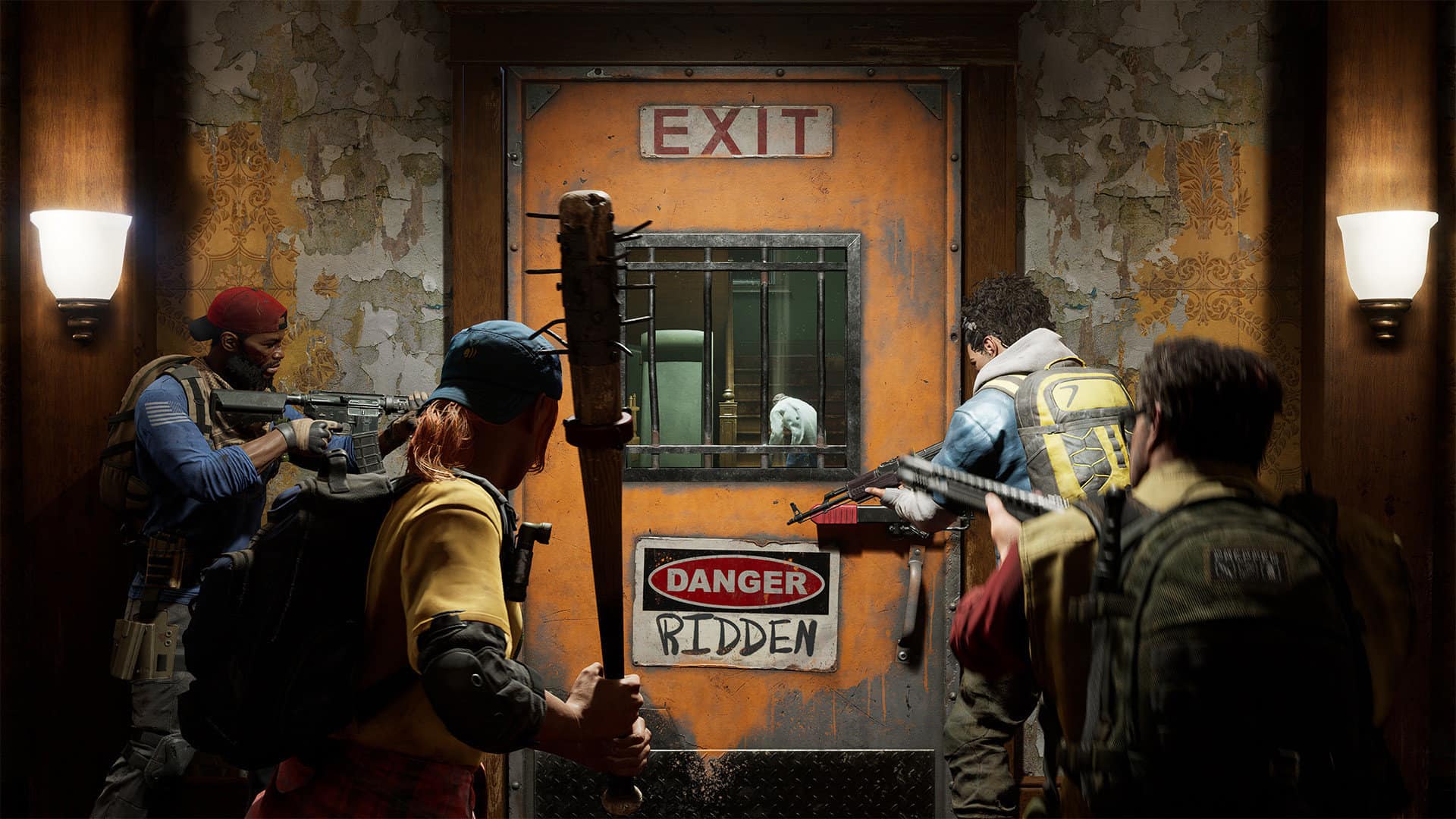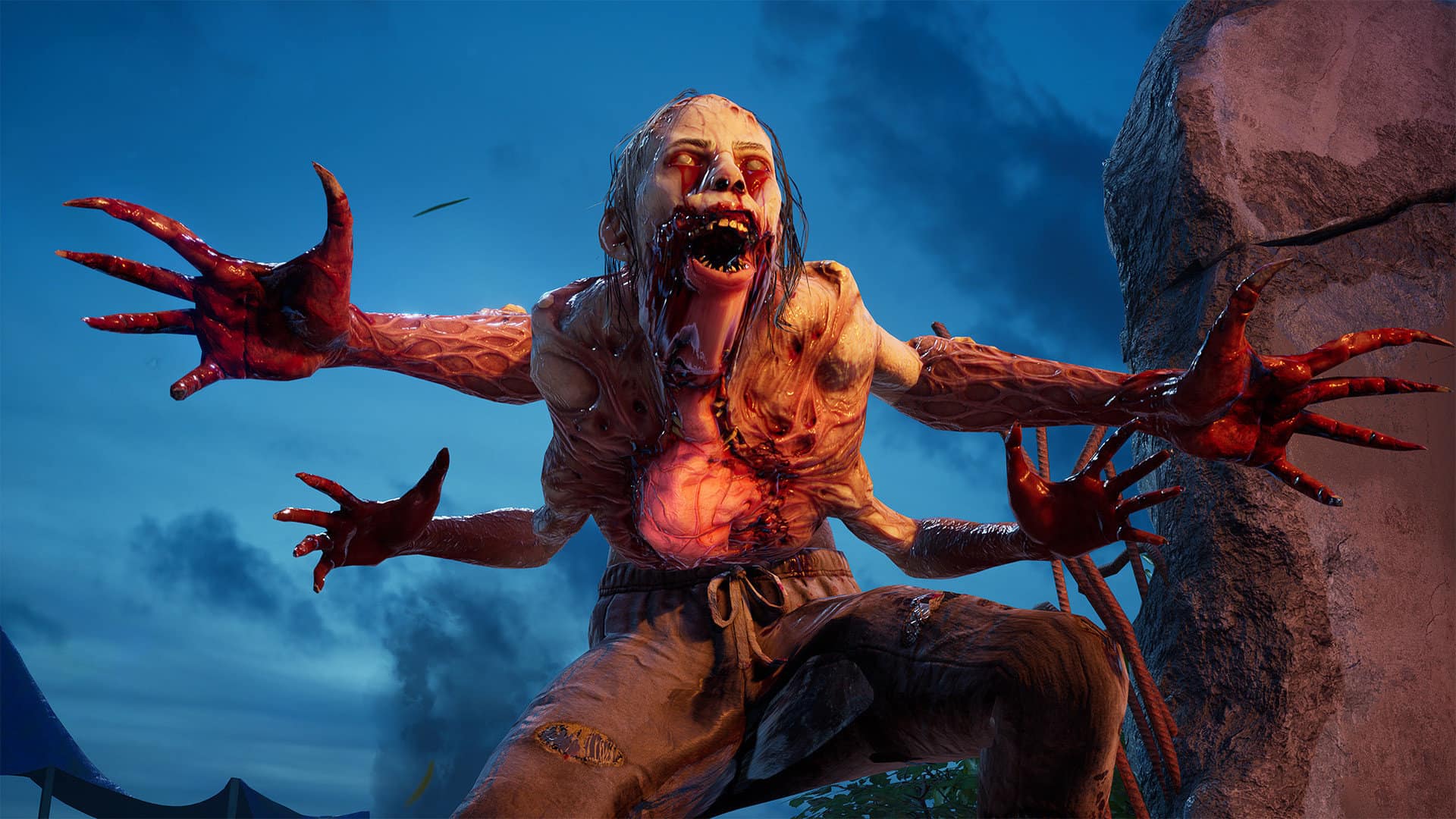You can trust VideoGamer. Our team of gaming experts spend hours testing and reviewing the latest games, to ensure you're reading the most comprehensive guide possible. Rest assured, all imagery and advice is unique and original. Check out how we test and review games here
After twelve years, Left 4 Dead is back. Although, to appease any prowling patent attorneys, we must refer to it as Back 4 Blood. It is developed by Turtle Rock Studios, the team that made Left 4 Dead. It entails the same four-player, first-person slaughter of Left 4 Dead. And it is flooded with the recently—and rottingly—deceased, as though one of Hell’s sewage pipes had ruptured, just like Left 4 Dead. But no. It is Back 4 Blood, and it is here, albeit in beta, with pleasantly rough edges and a frantic refusal to let anyone rest, either in peace or in the momentary lull between massacres—like Left 4 Dead.
In the years since Left 4 Dead 2, we have scarcely been wanting when it comes to corpses that refuse to lie down; in fact, you could argue that the theme has been done to death. We have had World War Z, which offers similar thrills but in third person, and under daylit skies. Then, there is the Zombie Army series, set in World War II, wherein the reanimated are wrapped in the uniforms of the Reich. (Apparently, we needed further motivation to shoot them in the head.) Some developers, meanwhile, see fit to inject their zombie games with smart and unexpected mechanics; playing the likes of Dead Island or Telltale’s The Walking Dead—one infected by bouts of parkour, the other by the branching of an episodic plot—you sensed that the genre had gone off in search of brains.
Why, then, should the arrival of Back 4 Blood—which offers neither parkour nor plot—be cause for celebration? The answer lies not in innovation but in the curious outline of Left 4 Dead. The particular hole that the series has bitten from the landscape and left us to chew over will be imperceptible to all but the most seasoned of zombologists. When the first game released, in 2008, it was hot on the entrails of Danny Boyle’s 28 Days Later, the remake of Dawn of the Dead, and I Am Legend. In other words, the style of George A. Romero—whose nightmare creations moaned along at a sleepwalker’s pace—was out (save for Shaun of the Dead, which smeared it with mocking reverence), and speed was in. The raveners that sprinted through London soon hopped the pond and started harrying the streets and shopping malls of America. It barely seemed as if they had had time to die before leaping back to unlife; they, along with the traditions of the zombie movie, had been Boyled alive.
What a relief it is, in Back 4 Blood, to be gripped by the quick-darting fever of first person; to be ranged against the fast-tracked undead, their eyes ablaze with a phosphorus gleam; and to find a mutated selection of extra-funky enemies, just to keep you on your toes. There is nothing here (in the beta, at any rate) with the same force of freakiness as the Witch, in Left 4 Dead, whose sobbing you would hear from a distance and whose shrieking, once disturbed, you would hear up close. It was a great two-stage goring—first your emotions and then your face. Instead, we have the Hocker, a four-armed banshee who leaps over buildings and croaks up limb-binding goo, along with a fairly dull selection of other brutes. The Bruiser: lanky, jumbo club-arm. The Retch: acid-spitting bloater, bursting with excitement to meet you. And the Ogre: end-of-level boss, big health bar, draining.
So there I was, in a fog-swirled forest—dead set on the end goal, headset echoing with the yelps and yeses of friends, and an M4 carbine coughing cheerily into the trees. It dawned softly on me that something was missing. What was it? The zombies were there, although they are referred to as the Ridden. (I found a note, stuck to a wall, that read, “We’re not using the zed word!â€) The survivors were all present and correct and archetypal; I went for the heavy-set Hoffman, because, with his thick, taped-together spectacles and his dark-red shirt, he was a dead ringer for Guillermo del Toro in Death Stranding. Then it hit me: fear. The series may spiritually be back, and it may want our blood, but it doesn’t seem interested in chilling it.
A friend of mine was quick to point out that playing both Left 4 Dead games has primed me for most of what is on offer here; the horrors have dried and crusted into a crackling action routine. That may be true, but I also couldn’t help notice a distinct lack of darkness in Back 4 Blood. Much of the combat in Left 4 Dead was caught in flashes; the flaring muzzle of your gun mingled with the beam of your torch and gave the impression that you weren’t just fighting the dead, but staving off the dying of the light. Here the torch is back, but the environments—a rusted array of low-rent streets, industrial lots, and swamps—don’t require it; they have a high-gamma glare that’s great for showing off the setting but cuts back the tension, and glazes the world with the faint feeling of unreality.
It’s perhaps fitting, in that case, that Back 4 Blood is powered by Unreal Engine 4. Left 4 Dead, of course, used Valve’s Source engine, which gave us Half-Life 2. No other engine has the scraping harshness of Source, which was tuned to the crumble of urban decay and the hard clack of gunfire; it may have given us City 17, but only when applied to the shuffling half-life of a zombie apocalypse did it really come home. Not that the weapons in the new game lack oomph. On the contrary, one area in which Back 4 Blood is an undoubted improvement on its predecessors is its armoury. There is a teeming selection of rifles, shotguns, and pistols. My personal favourites include the .357 magnum; the TEC 9, with its holier-than-thou aerated barrel; and the hatchet, the saving grace of which is its unlimited capacity. When you have an axe to grind, you don’t want to waste time reloading.
Even when things get truly frantic, the velocity of each skirmish isn’t roughed up by a rattling frame rate. I played on an Xbox Series X, and, though the action apparently reeled past at sixty frames-per-second, it didn’t feel like it; nor would I want it to. There is something irresistible in the jagged, as opposed to the lagged, flow of its violence. It feels, at times, like Call of Duty—itself no stranger to the undead—but with the high gloss scuffed and scratched by desperation. By the end of a late-night session that leaked into the early hours, I came away from the open beta pleasantly jangled; excited for the full release, on October 12; and slightly hollowed out. What we have here is a faithful follow-up, a loving homage to an Xbox 360 classic which time may have left but which evidently isn’t dead. Back 4 Blood has enough new touches to liven its formula: perks, in the shape of collectible cards, to be played before each level, for example, and a ping system—de rigeur these days. But some of the old fear has bled away, and the game doesn’t stand quite so apart from the scenery of its genre as its forebears did. It has been bitten by something, and I’m sorry to use the zed word: zeitgeist.
Back 4 Blood
- Platform(s): PC, PlayStation 4, PlayStation 5, Xbox One, Xbox Series S/X
- Genre(s): Action, First Person, Shooter




